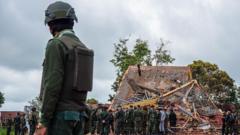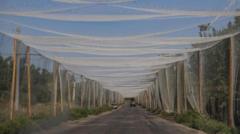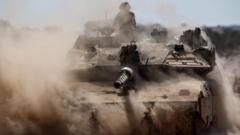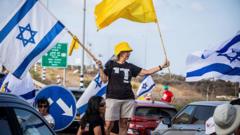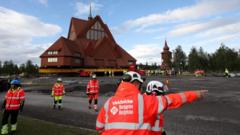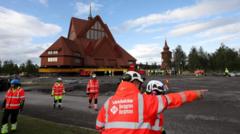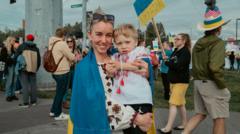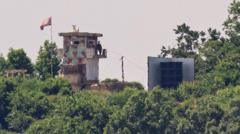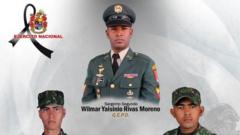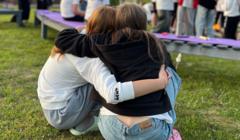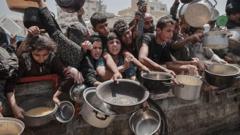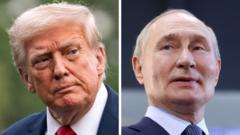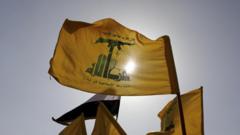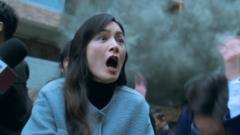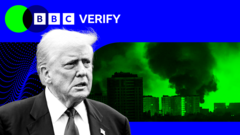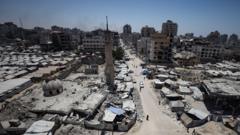The Druze community, historically vulnerable in Syria, now grapples with increasing violence and distrust towards both the government and neighboring groups following a surge of sectarian attacks. The situation has left many in fear for their safety and uncertain of who to trust.
Distrust and Fear: The Druze Community's Struggle in Post-War Syria
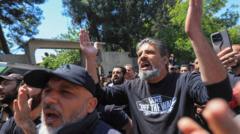
Distrust and Fear: The Druze Community's Struggle in Post-War Syria
The Druze community in Syria faces growing threats and uncertainty as sectarian violence escalates, leaving them fearful and isolated in a changing political landscape.
In the suburbs of Damascus, the pervasive atmosphere of fear has engulfed the Druze community, particularly following a surge in sectarian violence. Like many others, Lama al-Hassanieh found herself trapped in her bathroom, awaiting the end of gunfire outside her home in Ashrafiyat Sahnaya. From her hiding spot, she could hear threats directed at her community: “Jihad against Druze” and “we are going to kill you, Druze.” Without clarity on the identities of the armed men, whether they were extremists or government forces, Lama faced a stark reality: her safety as a Druze was compromised.
The Druze, a distinct religious group with roots in Shia Islam, have historically negotiated a complex relationship with Syria’s state. Under Bashar al-Assad's regime, many Druze maintained a quiet allegiance, believing this alignment would shield them from the sectarian violence prevalent in other regions. During the latter stages of the civil war, even as Druze citizens protested, Assad refrained from employing excessive force against them, a luxury not afforded to other dissenting groups.
However, the recent shift in power dynamics, particularly following victories by Sunni Islamist factions, has left Druze communities feeling increasingly vulnerable. Following an alleged incident involving a Druze religious leader and a fake audio recording, violent reprisals erupted in April, leading to at least 137 deaths across sectarian clashes, intensifying fears among Druze that they could be next targets in a community long viewed as heretical by some Sunni factions.
As violence unfolded, students like Lama Zahereddine faced not only physical threats but also emotional turmoil among their peers, with classmates demonstrating a lack of empathy during a crisis that threatened their lives. The resultant atmosphere has further eroded trust within the community and towards the state, leading individuals like Lama to question their relationships and alliances.
Hadi Abou Hassoun, another Druze defender, illustrated the perilous conditions Druze faced when he and a team of volunteers were ambushed by groups utilizing heavy weaponry. The notion that law and protection exists has dimmed, as the attacks seem to stem from factional and religious ideologies rather than any semblance of legal accountability or state support.
Despite diminishing trust in the government, the Syrian state has claimed its commitment to protect all citizens, including the Druze. Nevertheless, responses have felt inadequate. These sentiments were echoed as Israel conducted airstrikes purportedly to safeguard Druze interests, revealing not only foreign involvement in local conflicts but also exposing a troubling gap in local governance.
In the aftermath of the violence, a wary calm descends back on Ashrafiyat Sahnaya, with neighbors re-emerging but remaining inherently suspicious of each other. Lama expresses a poignant frustration—“Where is the justice?” The call for accountability resonates deeply, echoing a universal desire for safety and equality. In a post-war Syria, as identities are challenged and trust becomes a luxury, the Druze community finds itself at a critical crossroads between fear and the hope for recognition as equals within their own homeland.


